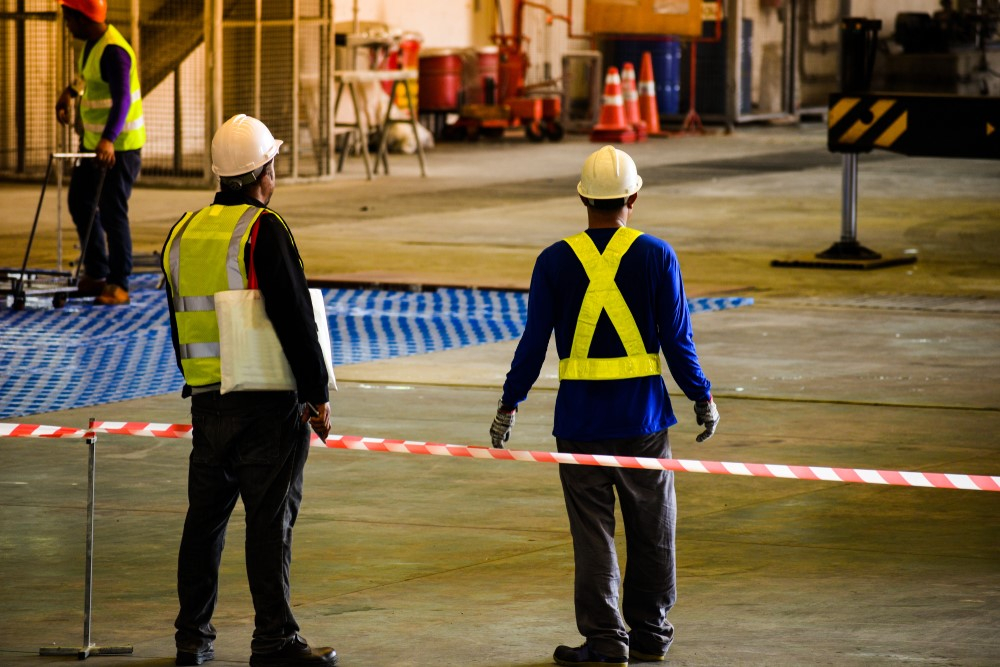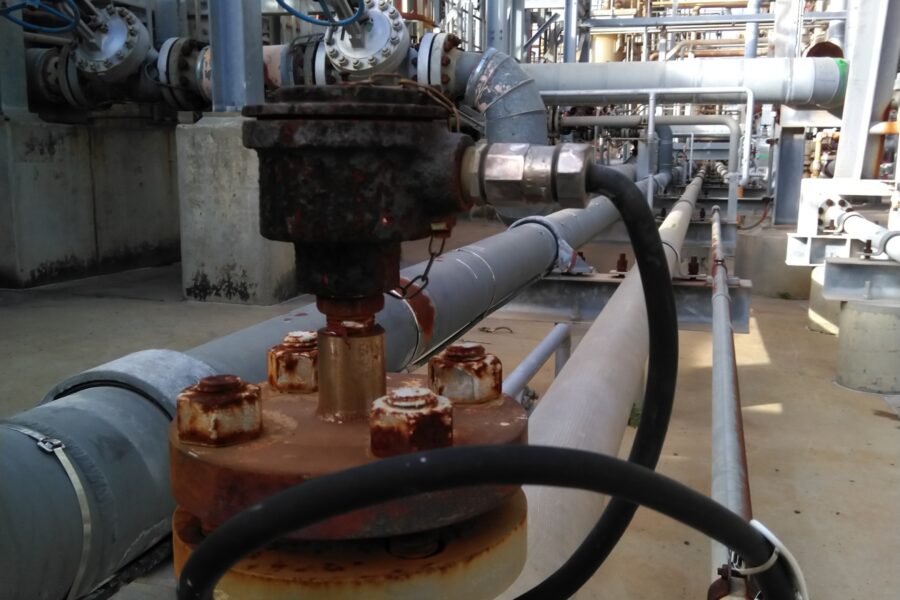Not known Factual Statements About Roar Solutions
Not known Factual Statements About Roar Solutions
Blog Article
Roar Solutions Things To Know Before You Buy
Table of ContentsThe 9-Second Trick For Roar SolutionsGetting My Roar Solutions To WorkRoar Solutions for Beginners
In such an ambience a fire or surge is possible when three standard problems are satisfied. This is often referred to as the "hazardous location" or "burning" triangular. In order to safeguard setups from a possible surge a technique of evaluating and categorizing a potentially harmful location is called for. The function of this is to make certain the proper choice and setup of devices to ultimately prevent a surge and to make certain security of life.
(https://www.reddit.com/user/roarsolutions1/)
No devices ought to be mounted where the surface area temperature level of the devices is more than the ignition temperature level of the given danger. Below are some usual dirt harmful and their minimal ignition temperature level. Coal Dust 380C 225C Polythene 420C (thaws) Methyl Cellulose 420C 320C Starch 460C 435C Flour 490C 340C Sugar 490C 460C Grain Dirt 510C 300C Phenolic Material 530C > 450C Aluminium 590C > 450C PVC 700C > 450C Residue 810C 570C The likelihood of the risk being existing in a concentration high sufficient to trigger an ignition will certainly vary from area to area.
In order to identify this threat an installation is divided into locations of danger relying on the amount of time the dangerous is present. These locations are referred to as Zones. For gases and vapours and dirts and fibers there are 3 zones. Zone 0 Zone 20 An unsafe ambience is extremely most likely to be existing and may exist for long durations of time (> 1000 hours per year) or even constantly Zone 1 Zone 21 A dangerous environment is possible yet not likely to be existing for extended periods of time (> 10 450 C [842 F] A classification of T6 suggests the minimal ignition temperature is > 85 C [185 F] Dangerous area electric tools possibly developed for usage in higher ambient temperatures. This would certainly suggested on the score plate e.g. EExe II C T3 Ta + 60C( This implies at 60C ambient T3 will certainly not be gone beyond) T1 T1, T2, T3, T4, T5, T6 T2 T2, T3, T4, T5, T6 T3 T3, T4, T5, T6 T4 T4, T5, T6 T5 T5, T6 T6 T6 A T Course rating of T1 suggests the optimum surface temperature level produced by the instrument at 40 C is 450 C. Assuming the linked T Class and Temperature level ranking for the equipment are ideal for the area, you can constantly use a tool with a much more rigorous Division ranking than needed for the location. There isn't a clear response to this inquiry sadly. It truly does depend on the kind of devices and what repair work require to be brought out. Equipment with particular test procedures that can't be performed in the field in order to achieve/maintain 3rd party score. Must return to the factory if it is prior to the tools's service. Area Repair By Authorised Employee: Complex screening might not be called for nevertheless details procedures may require to be adhered to in order for the tools to maintain its 3rd party score. Authorized personnel should be used to perform the work properly Repair work have to be a like for like substitute. New component need to be considered as a direct substitute calling for no unique screening of the tools after the fixing is complete. Each tool with an unsafe ranking should be reviewed separately. These are outlined at a high level listed below, however for even more comprehensive info, please refer straight to the standards.
The smart Trick of Roar Solutions That Nobody is Discussing
The devices register is an extensive data source of tools documents that includes a minimum collection of fields to identify each product's area, technological specifications, Ex category, age, and ecological data. This information is crucial for monitoring and handling the tools efficiently within hazardous locations. In comparison, for periodic or RBI sampling evaluations, the quality will be a mix of In-depth and Close assessments. The proportion of Detailed to Shut assessments will certainly be established by the Tools Risk, which is analyzed based on ignition danger (the possibility of a resource of ignition versus the probability of a combustible environment )and the unsafe area category
( Zone 0, 1, or 2). This variation will certainly likewise affect the resourcing requirements for work prep work. Once Great deals are specified, you can establish tasting plans based on the example dimension of each Whole lot, which refers to the variety of arbitrary tools products to be inspected. To figure out the called for sample size, two elements require to be assessed: the size of the Great deal and the category of examination, which shows the level of initiative that need to be used( reduced, normal, or raised )to the inspection of the Whole lot. By combining the category of evaluation with the Whole lot dimension, you can after that develop the ideal rejection criteria for an example, indicating the allowed variety of faulty products discovered within that example. For even more details on this process, please describe the Power Institute Guidelines. The IEC 60079 standard recommends that the maximum interval in between evaluations must not go beyond three years. EEHA assessments will certainly likewise be carried out outside of RBI projects as part of scheduled maintenance and tools overhauls or fixings. These assessments can be credited towards the RBI sample dimensions within the impacted Lots. EEHA inspections are performed to determine faults in electrical tools. A weighted racking up system is necessary, as a single tool might have numerous faults, each with varying degrees of ignition danger. If the consolidated score of both inspections is much less than twice the fault rating, the Lot is deemed appropriate. If the Great deal is still considered inappropriate, it must undertake a full evaluation or justification, which might trigger stricter assessment protocols. Accepted Whole lot: The sources of any type of mistakes are identified. If a common failing setting is discovered, added equipment might call for maintenance. Mistakes are categorized by seriousness( Safety and security, Stability, Housekeeping ), making certain that urgent issues are evaluated and addressed immediately to minimize any type of influence on security or procedures. The EEHA data source should track and tape the lifecycle of faults together with the rehabilitative actions taken. Applying a robust Risk-Based Assessment( RBI )approach is vital for ensuring compliance and security in taking care of Electrical Devices in Hazardous Locations( EEHA) (electrical refresher course). Automated Fault Scoring and Lifecycle Management: Easily take care of mistakes and track their lifecycle to boost evaluation accuracy. The introduction of this support for risk-based inspection even more enhances Inspectivity's setting as a best-in-class remedy for governing conformity, along with for any kind of asset-centric examination usage situation. If you want discovering more, we invite you to request a demonstration and discover just how our option can transform your EEHA management procedures.
Rumored Buzz on Roar Solutions

In terms of explosive risk, a hazardous location is a setting in which an eruptive atmosphere exists (or might be expected to be existing) in quantities that need special precautions for the building and construction, installment and use equipment. eeha training. In this write-up we check out the challenges dealt with in the work environment, the risk control actions, and the needed competencies to work securely
It is a consequence of contemporary life that we produce, store or take care of a series of gases or fluids that are considered combustible, and a variety of dirts that are considered flammable. These substances can, in particular conditions, create explosive environments and these can have significant and awful effects. The majority of us are familiar with the fire triangular get rid of any among the three components and the fire can not happen, yet what does this mean in the context of unsafe areas? When damaging this down into its most basic terms it is basically: a mix of a particular amount of launch or leak of a certain compound or product, mixing with ambient oxygen, and the visibility of a source of ignition.
In many instances, we can do little concerning the degrees of oxygen airborne, however we can have substantial impact on resources of ignition, for instance electric equipment. Hazardous areas are documented on the dangerous area classification illustration and are identified on-site by the triangular "EX LOVER" indication. Here, amongst other key info, areas are divided into three types depending on the risk, the likelihood and duration that an explosive ambience will exist; Area 0 or 20 is considered the most hazardous and Area 2 or 22 is regarded important site the least.
Report this page